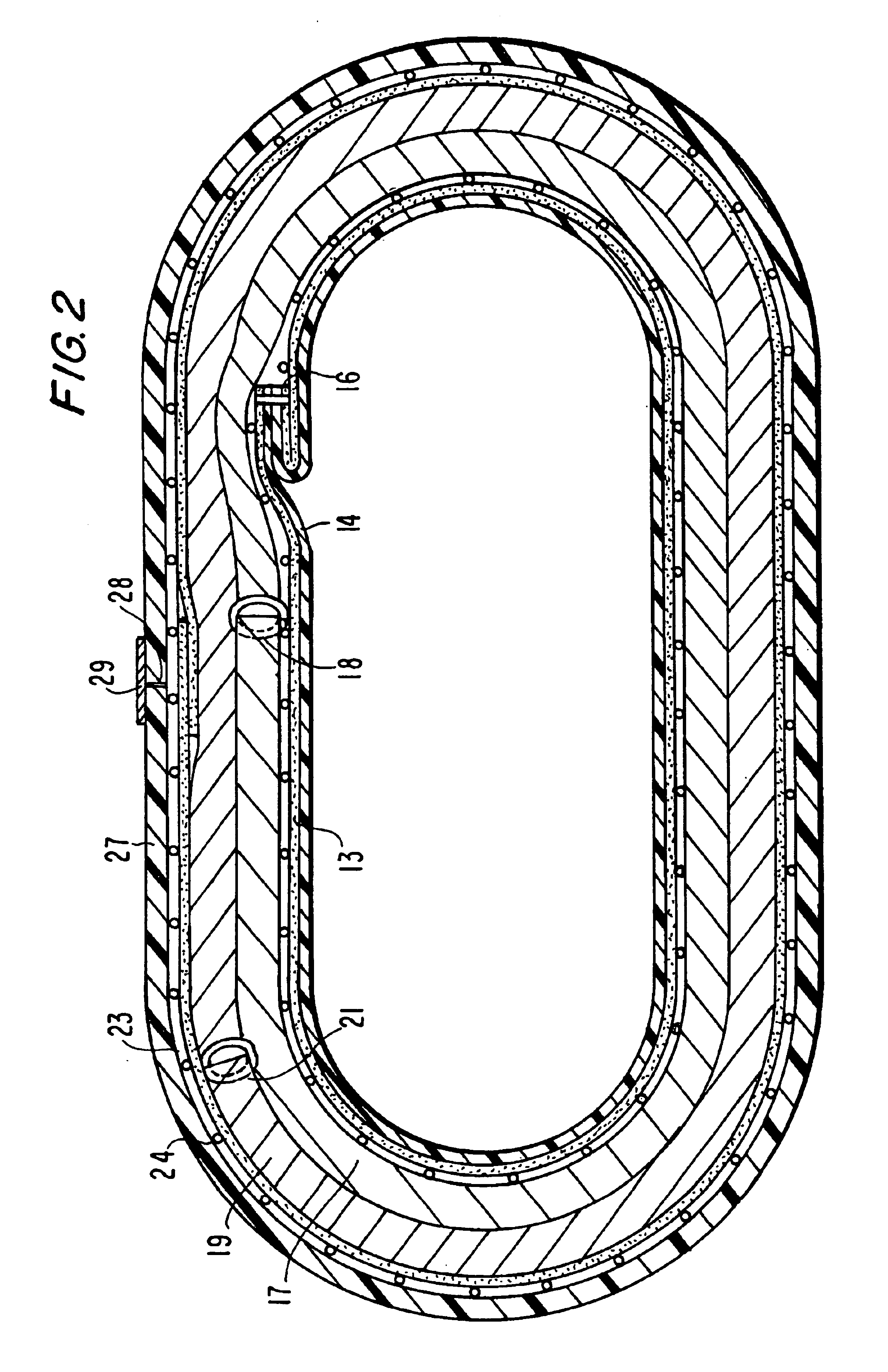Fiber reinforced composite liner for lining an existing conduit and method of manufacture
a conduit technology, applied in the field of fiber reinforced composite liner, can solve the problems of deterioration of the pipe itself, near the pipe joint, and the maintenance of underground pipes, so as to reduce the overall material cost and manufacturing cost, and increase the buckling resistance.
- Summary
- Abstract
- Description
- Claims
- Application Information
AI Technical Summary
Benefits of technology
Problems solved by technology
Method used
Image
Examples
Embodiment Construction
[0037]By incorporating high modulus fibers in the lining structure the flexural and compressive moduli of the lining can be increased so that thinner linings can be used for a given design pressure. Such reinforcing fibers may be arranged in one axis, in one plane or randomly in all three axes (as with standard felt), but the volume fraction of the reinforcement is minimized and the axial modulus and strength are maximum when the fibers are in one axis and reduce rapidly when the other structures are used. Linings require circumferential strength and stiffness so fibers should be aligned in the circumferential direction and the most economical use is in two layers at the outside surfaces.
[0038]The following table compares properties of glass fibers and certain available lower cost carbon fibers.
[0039]
TABLE IUni-directionalUni-directionalBi-axialPropertyCarbon FiberGlass FiberCarbon + resinGlass + resinGlass + resinTensile450,000350,000182,000161,00080,000Strength psiTensile33,000,00...
PUM
| Property | Measurement | Unit |
|---|---|---|
| width | aaaaa | aaaaa |
| thickness | aaaaa | aaaaa |
| modulus | aaaaa | aaaaa |
Abstract
Description
Claims
Application Information
 Login to View More
Login to View More - R&D
- Intellectual Property
- Life Sciences
- Materials
- Tech Scout
- Unparalleled Data Quality
- Higher Quality Content
- 60% Fewer Hallucinations
Browse by: Latest US Patents, China's latest patents, Technical Efficacy Thesaurus, Application Domain, Technology Topic, Popular Technical Reports.
© 2025 PatSnap. All rights reserved.Legal|Privacy policy|Modern Slavery Act Transparency Statement|Sitemap|About US| Contact US: help@patsnap.com



